Impact case studies
In order to gauge the impact of its research, the Institute for Work & Health tracks and reports on the uptake, use and effects of its research by stakeholders within the occupational health and safety, disability prevention and workers’ compensation systems—largely in Ontario, but also in other jurisdictions in Canada and around the world. This tracking and reporting is done according to a research impact model developed by the Institute. Case studies that illustrate impact are a key feature of the model, and they are included here, from the most recent to the oldest.

Word spreads about IWH tools, thanks to stakeholders' support
Since the release of two tools designed to support the sustained employment of people with chronic and episodic conditions, word has spread quickly to new audiences who have learned about and adopted them. That's thanks to organizations that promoted the tools and helped them reach the hands of workers, employers and post-secondary students who are about to move forward in the labour market.
Published:

Being part of an IWH research partnership helped health charities meet their communities’ needs
The seven-year partnership project, titled Accommodating and Communicating about Episodic Disabilities (ACED), showcases the role partner organizations can play in developing user-friendly research products and in disseminating these products more widely. The partnership enhanced both the quality of the research and the partners’ ability to serve their clients.
Published:
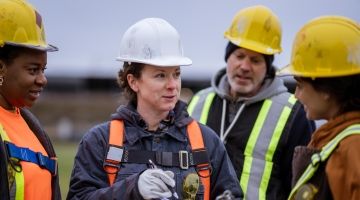
Saskatchewan’s construction safety group uses IWH tool to improve safety culture
Since 2021, the Saskatchewan Construction Safety Association (SCSA) has been surveying its members twice per year on their organizations’ safety practices and culture using IWH’s Organizational Performance Metric (OPM). A new case study details how SCSA members have been analyzing OPM scores to adjust their safety practices and how SCSA has been using the data to tailor their outreach.
Published:

Moving research into practice in a program about movement
Nova Scotia's Make Your Move at Work (MYMAW) program is designed to help employers support their employees in adding more movement to the workday. It was informed by IWH research on Canadian workers' movement patterns and health, and how employers can integrate health promotion activities into the workplace.
Published:

Construction safety org adapts IWH research messages for tradesworker audience
A key program from Construction Health and Safety New Zealand—developed using IWH research—takes a participatory ergonomics approach to better prevent and manage musculoskeletal injuries among construction workers.
Published:

IWH evaluation of the effectiveness of the Ontario working-at-heights training standard
An IWH study on the effectiveness of Ontario's mandatory training was helpful to the labour ministry in several ways—including in reinforcing the value of program evaluations.
Published:

Following reports by IWH and others, B.C. amends the law to strengthen protections against claim suppression
After an IWH study filled a research gap on claim suppression in B.C. and helped make the case for change, the province amended legislation to strengthen protections against the practice.
Published:

Workers Compensation Board of Manitoba uses IWH research to update its “Return to Work Basics” workshop
When the Workers Compensation Board of Manitoba decided to update its return-to-work training, it wanted to build confidence in the content by including evidence-based guidance from trusted sources. For a key part of the workshop, it turned to the Institute for Work & Health's "Seven Principles."
Published:

Saskatchewan’s construction safety group uses IWH’s safety culture tool to measure OHS among member employers
When the Saskatchewan Construction Safety Association went looking for a tool to measure the OHS performance of its members firms, it turned to the Institute's easy-to-use, eight-item safety culture measure—the IWH-OPM.
Published:

Research institutes in Australia, Europe, U.S. build on IWH’s impact model
IWH’s Research Impact Model, developed in 2010 to guide the Institute's thinking about its impact, has resonated with other work-health research organizations and informed how they assess the impact of their work.
Published:

IWH recommendations contribute to enhancement of the WSIB’s Health and Safety Index
When the WSIB decided to revisit the methods behind the Health and Safety Index, two IWH researchers provided advice on areas where the index could be improved. In October 2021, the HSI was revised, incorporating many of the suggestions provided by IWH.
Published:

WSIB includes Institute safety culture tool in Health and Safety Excellence Program
Ontario's Workplace Safety and Insurance Board made a modified version of an Institute safety culture tool called the IWH-OPM available to firms as a voluntary component of participating in its Health and Safety Excellence Program.
Published:

IWH researchers help MPs examine episodic disabilities and work issues
IWH senior scientists presented expert testimony to a federal standing committee looking at the needs of people with episodic disabilities—an example of how research can support policy-makers in addressing important societal issues.
Published:
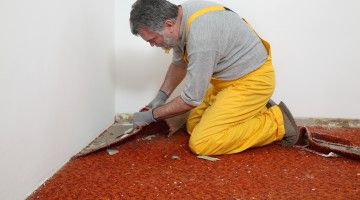
IWH review findings add consistency to osteoarthritis-related advice offered by WorkSafeBC medical advisors
The findings of an Institute for Work & Health systematic review on the association between osteoarthritis and work are being used by WorkSafeBC's medical advisors, contributing to more consistency in claims adjudication.
Published:

Ontario Mining Association endorses safety climate and assessment audit tool
A tool designed to measure "two sides of the coin"—OHS systems and culture—developed by Workplace Safety North with IWH expertise, has been endorsed by Ontario's mining association, and now is in demand well beyond the province and the sector.
Published:

Safety culture framework in Manitoba incorporates IWH expertise, tools
SAFE Work Manitoba incorporated IWH expertise and tools into the framework of its ambitious safety culture initiative, which aims to make workplace injury prevention a genuine priority among all segments of the population across the province.
Published:

Integrating return-to-work principles in an occupational medicine service
An occupational medicine assessment service integrated two of the return-to-work supports (enhanced coordination and communication) outlined in IWH's evidence-based Seven Principles guide, contributing to a significant improvement in the duration of wage replacement benefits among injured workers with problematic musculoskeletal disorders.
Published:
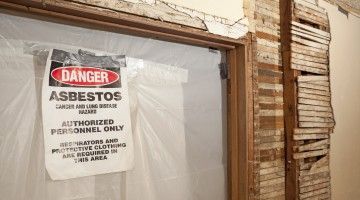
IWH research raises awareness of the economic burden of asbestos-related disease as Canada commits to ban
An IWH study estimating the lifetime cost of newly diagnosed cases of mesothelioma and lung cancer due to work-related asbestos exposures in a single year garnered much media and public interest, and was cited by Canadian government in its analysis of the impact of its regulation banning asbestos.
Published:

Concerns about newcomers’ safety at work lead organizations to IWH toolkit
Organizations working with recent immigrants are incorporating parts of the Institute's toolkit for teaching newcomers about workplace health and safety into their programming. Organizations in Ontario, Alberta, Northwest Territories and Nunavut, and even as far away as Australia, say the resource is just what they were looking for.
Published:

IWH model on breakthrough change used as foundation for WSPS small business strategy
An Ontario health and safety association, Workplace Safety and Prevention Services, turned to the Institute's model of breakthrough change to inform its approach to small business, especially the concept of finding the "knowledge transformation leader" within a small business to advocate for occupational health and safety change.
Published:
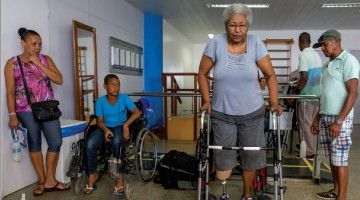
WHO guidelines on rehabilitation in health systems informed by IWH systematic reviews
When the World Health Organization released its evidence-based guideline to help primarily low- and middle-income countries develop, extend equitably deliver rehabilitation services, it relied on evidence synthesized by an IWH research team for five of the guideline's nine recommendations.
Published:

Seven “principles” used in return-to-work policies and practices
When Ontario legislated in 1997 that employers and workers cooperate in the early and safe return to work of injured workers, the workplace parties were looking for guidance. They found it in the Institute for Work & Health's evidence-based Seven "Principles" for Successful Return to Work, one of the most popular and widely used guides developed by the Institute.
Published:

WSIB integrates prognostic information in improved return-to-work case management services
Four factors that predict how long injured workers will remain off work are incorporated into new case management model at Ontario's Workplace Safety and Insurance Board.
Published:

Reduced soft-tissue injuries at Ontario utility attributed to work by ergonomics team set up during IWH study
Ten years after it took part in a participatory ergonomics study, Kitchener-Wilmot Hydro's change team was still going strong.
Published:

OHS leader Carillion Canada uses IWH’s vulnerability measure to identify areas for continuous improvement
Despite a strong OHS record, construction and facilities management company sees benefit of learning more through use of IWH's OHS Vulnerability Measure.
Published:
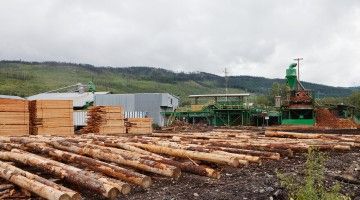
IWH eight-item tool helping WorkSafeBC assess workplace cultures, interact with employers
The IWH Organizational Performance Metric (IWH-OPM) helps WorksafeBC act on a review recommendation to assess safety culture in the province's workplaces.
Published:

Ontario prevention system adopts IWH conceptual framework for OHS vulnerability
A new way of thinking about "vulnerable workers" makes inroads with Ontario's Ministry of Labour and its partners.
Published:

Ontario intends to make client employers liable for injury-related cost of temporary agency workers
With regulatory change, Ontario's Ministry of Labour addresses gap in experience rating system after IWH study shows temp workers falling through the cracks.
Published:

Ontario prevention system shifts risk-of-injury emphasis from “young workers” to “new workers”
New workers are in the spotlight after IWH research show workers are at much greater risk of injury in the first month of the job.
Published:

IWH leading indicator tool wins over advocates across Canada
The eight-item IWH-OPM is used in several provinces to strengthen safety performance in workplaces.
Published:

OSHA says IWH review confirms effectiveness of OHS enforcement
Why the U.S. federal agency OSHA cites IWH research to bolster changes in its approach to enforcement.
Published:

The growing use and application of IWH’s DASH Outcome Measure
Researchers and clinicians alike have embraced the 20-year-old measure that assesses function and disability among people with upper extremity musculoskeletal disorders.
Published:

WSIB work reintegration program improves outcomes, lowers costs
Study by IWH "points us in the right direction," says former WSIB exec.
Published:

Leading indicators and benchmarking key to growing success for property management company
Brookfield Johnson Controls turns to the IWH-OPM after deciding to shift focus away from lagging indicators.
Published:

WSIB narcotics strategy reducing harm and spending
IWH opioid and chronic pain expert, Dr. Andrea Furlan, helps shape new rules in her role on drug advisory committee.
Published:

Evidence-based service delivery model at WSIB improved return-to-work outcomes
A new case management system for delivering services to injured workers and employers in Ontario leads to improved return-to-work outcomes.
Published:

Manitoba takes measures to address claims suppression, review assessment rate model
IWH conference on experience rating and financial incentives helps shape review of claims suppression.
Published:

WorkSafeNB adopts IWH’s tool to benchmark health and safety
Institute expertise tapped to evaluate agency's safety perception tool--and to provide a better alternative.
Published:

WCB adapts toolkit for newcomers to Manitoba context
The toolkit, called Prevention is the Best Medicine, hopes to bridge the knowledge gap among newcomers of OHS and workers' compensation issues.
Published:

MOL broadens strategy for identifying poor OHS performers
IWH evaluation of high risk firm program confirms need for a redesign.
Published:

CAMH improves office ergonomics through IWH online training program
A piloted training program was so successful it's now offered to all staff at this hospital and research centre.
Published:
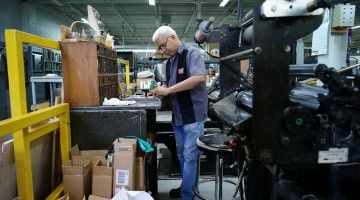
WSIB introduces new work reintegration program
Research by IWH scientist describes problems with previous program and suggests way forward.
Published:

IWH expertise key to opioid guideline, tool development
Work on Canadian opioid guideline in turn leads to development of opioid management tool and helps launch IWH scientist's profile as opioid expert.
Published:

SIEF amendments reduce relieved benefit costs
An IWH analysis helps lead to creation of specialized SIEF adjudication team at Ontario's Workplace Safety and Insurance Board, resulting in millions in savings.
Published:

Expert panel reshapes Ontario's OHS system
IWH scientists support the work of the Dean panel with "trusted" and "balanced" research and analysis.
Published:

German MSD campaign incorporates IWH systematic review findings
Germany's social insurance authority regularly turns to systematic reviews from the Institute for Work & Health because of their quality and reliability.
Published:

Ontario WSIB rolls out new service delivery model
Agency turns around rise of long-duration claims with a new model informed by IWH research.
Published:

USW in Canada broadens young worker training
Union awareness program draws on IWH research findings to target all new workers–not just workers who are young.
Published:

WSIB launches anti-stigma initiative
Community research project involving injured workers identifies stigmatizing attitudes as a problem.
Published:

Ontario prevention system produces MSD toolkit
IWH joins system partners in the creation of the MSD Prevention Guideline, an essential resource for province's enforcement efforts.
Published:

WSIB turns to IWH for its expertise in logic models
Institute scientists work with WSIB to provide ongoing evaluation of three important programs.
Published:

Auditor general report leads to hearings on WSIB unfunded liability
Report cites IWH research as important in identifying the need for change in WSIB's service delivery model.
Published:

Manitoba launches safety initiative for immigrants
Research by IWH team confirms for Manitoba the need to increase OHS awareness among newcomers.
Published:

Health and safety association uses regional injury rates to target services
Knowledge exchanges across the prevention system helps research findings reach front-line consultants and shape service delivery model.
Published: